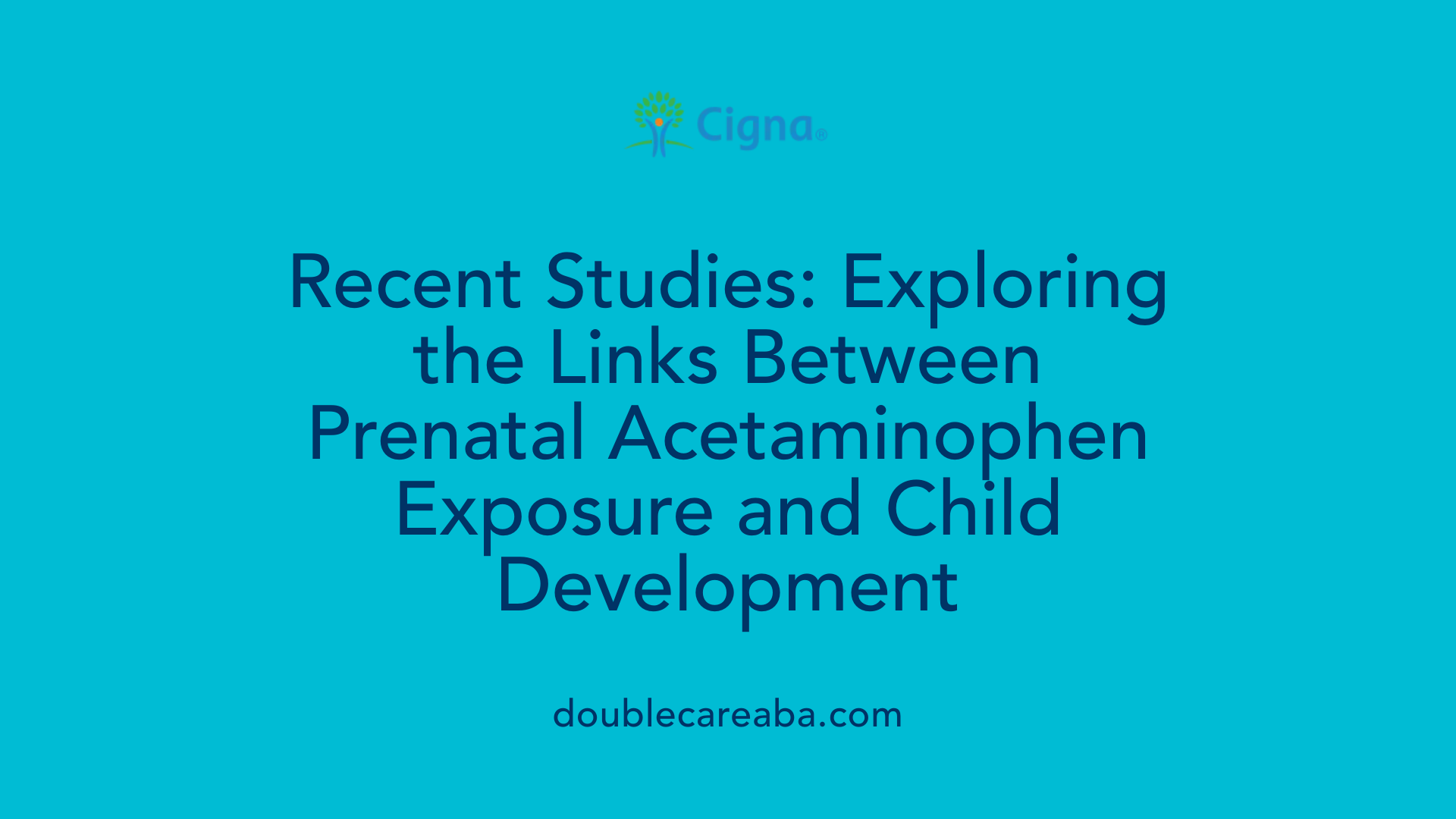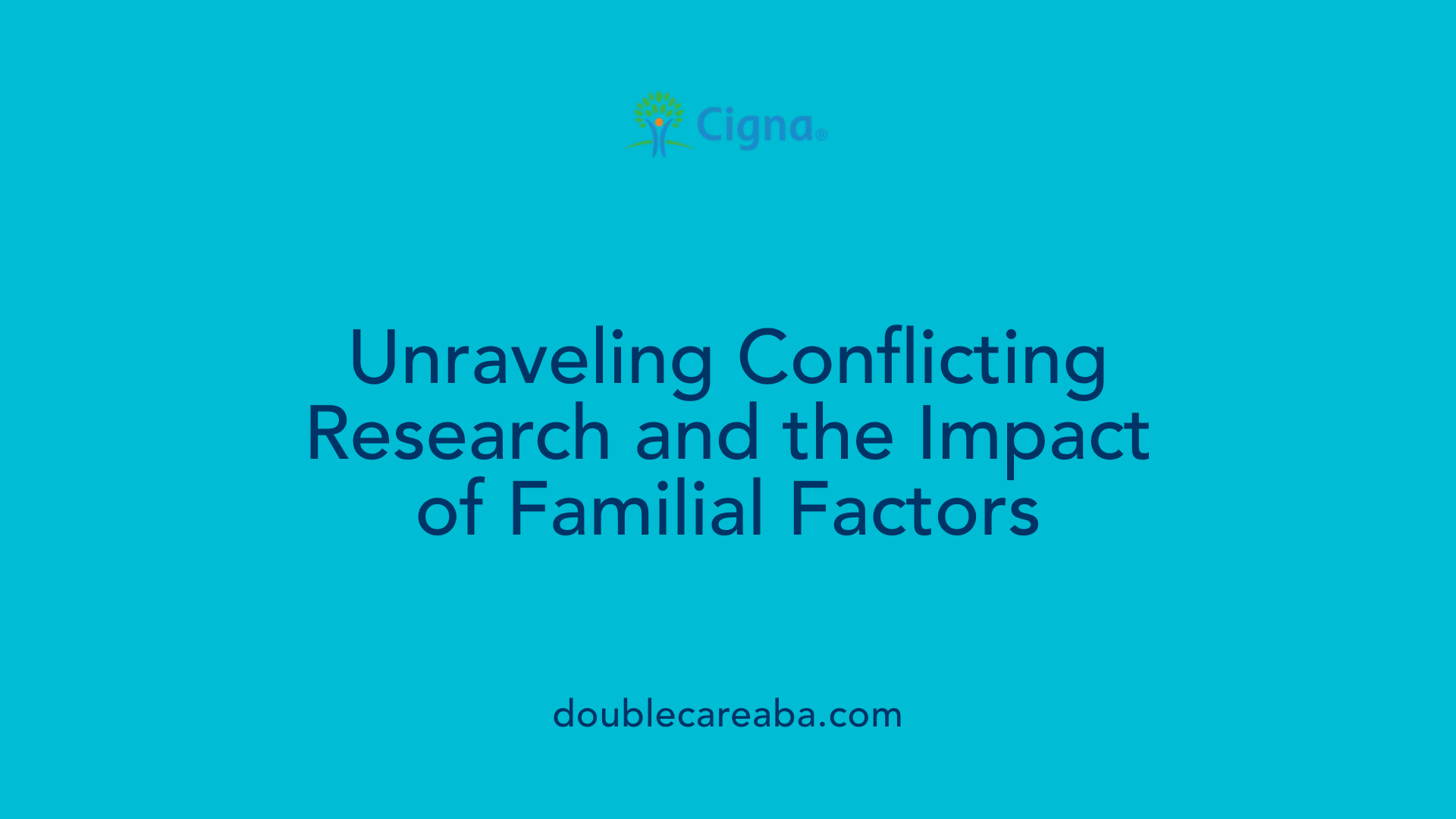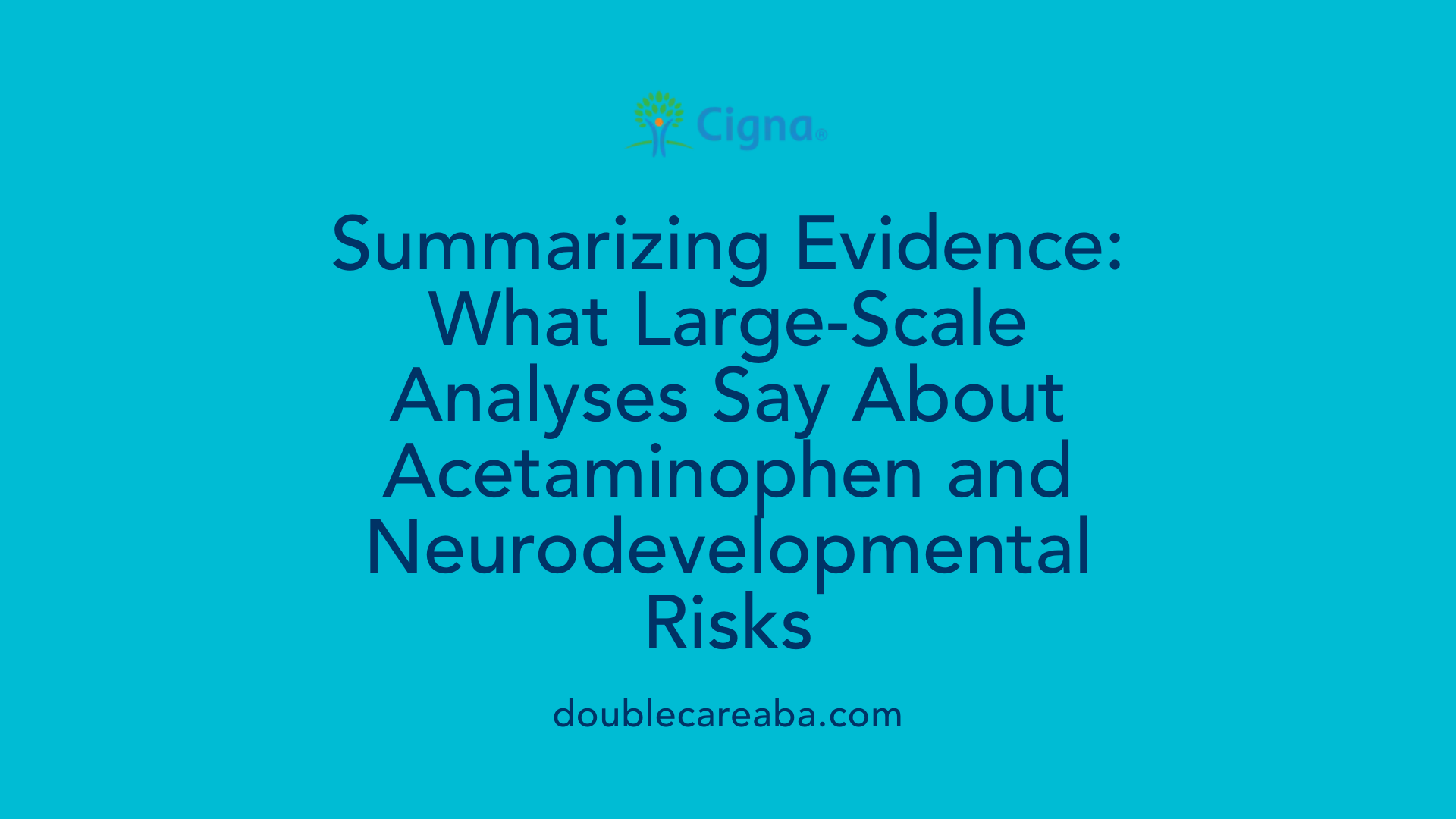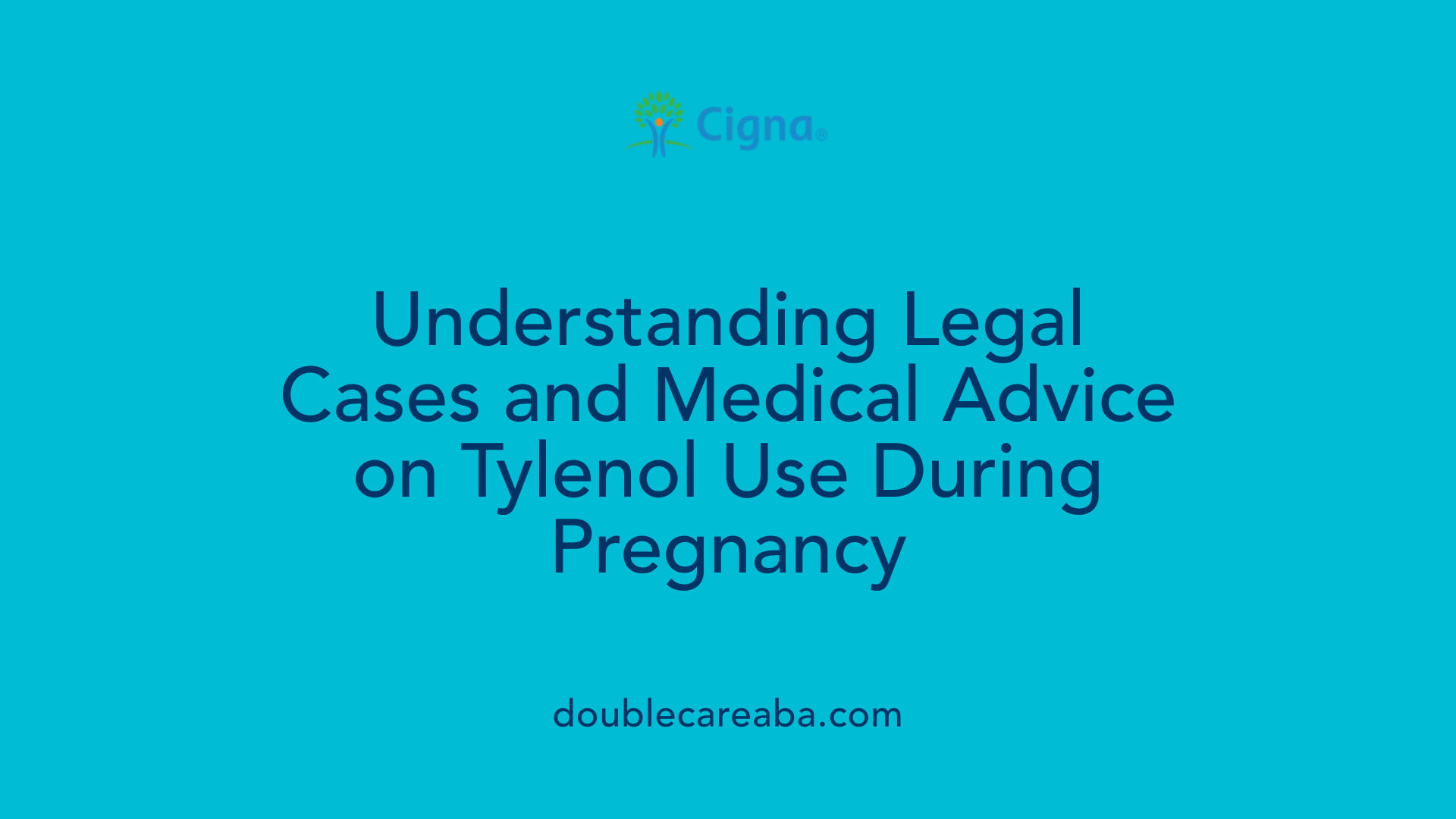Investigating the Potential Neurodevelopmental Risks of Acetaminophen During Pregnancy
Recent scientific studies have examined the possible connection between the use of Tylenol (acetaminophen) during pregnancy and the development of autism spectrum disorder (ASD) and attention deficit hyperactivity disorder (ADHD) in children. While initial concerns suggested a potential risk, emerging evidence from large population studies and biomarker analyses offers a nuanced picture, with many findings indicating no causal relationship. This article explores the current state of research, legal considerations, and guidance for expectant mothers.
Recent Scientific Findings and Cohort Studies
 Various extensive studies have examined the potential connection between prenatal acetaminophen use and neurodevelopmental disorders like autism spectrum disorder (ASD) and attention deficit hyperactivity disorder (ADHD). For instance, research utilizing large datasets such as the Swedish national registry analyzed the medical records of over 2.4 million children born between 1995 and 2019. These studies initially observed a slight increase in risks—about 5% for autism and ADHD—among children whose mothers took acetaminophen during pregnancy. However, when researchers compared siblings within these families, controlling for genetic and environmental factors, the increased risks disappeared, indicating that other confounding variables might influence earlier findings.
Various extensive studies have examined the potential connection between prenatal acetaminophen use and neurodevelopmental disorders like autism spectrum disorder (ASD) and attention deficit hyperactivity disorder (ADHD). For instance, research utilizing large datasets such as the Swedish national registry analyzed the medical records of over 2.4 million children born between 1995 and 2019. These studies initially observed a slight increase in risks—about 5% for autism and ADHD—among children whose mothers took acetaminophen during pregnancy. However, when researchers compared siblings within these families, controlling for genetic and environmental factors, the increased risks disappeared, indicating that other confounding variables might influence earlier findings.
Similarly, the Boston Birth Cohort, which analyzed umbilical cord blood from nearly 1,000 births, found that higher levels of acetaminophen in cord blood were associated with increased risks of ASD and ADHD. Children with the highest exposure had nearly three times the likelihood of diagnosis compared to those with the lowest exposure. These findings support earlier research suggesting a potential link but do not establish causality.
Measuring acetaminophen exposure through umbilical cord blood biomarkers provides a more accurate assessment of prenatal exposure than previous reliance on maternal self-reporting, which often suffers from recall bias and inaccuracies. This biological approach allows researchers to quantify actual fetal exposure levels and better understand their potential effects.
Despite some early epidemiological studies indicating associations, more recent and rigorous research—especially sibling-controlled analyses—has not confirmed a causal relationship between acetaminophen use during pregnancy and neurodevelopmental disorders. Overall, while controversial, current evidence underscores that further targeted research is necessary to clarify any definitive links.
| Study | Population Sample | Major Finding | Methodology | Limitations |
|---|---|---|---|---|
| Swedish national registry | 2.4 million children (1995–2019) | Slight initial increased risks; no association in sibling analysis | Population cohort with sibling controls | Over-the-counter use may be underreported |
| Boston Birth Cohort | 996 births, cord blood biomarkers | Higher cord blood levels related to increased ASD and ADHD risk | Measurement of cord blood acetaminophen levels | Limited to smaller, specific population |
| JAMA Swedish study | 2 million children, sibling comparison | No increased neurodevelopmental risks with prenatal use | Sibling comparison, large registry data | Dependence on prescription data |
Overall, current scientific evidence suggests that while some studies observe associations, these do not confirm causality. The use of sibling control studies, larger sample sizes, and biological measurements strengthen the evidence that acetaminophen use during pregnancy may not be directly responsible for neurodevelopmental issues like autism and ADHD.
Contradictory Findings and the Role of Familial Confounding
 Recent large-scale studies, especially those comparing siblings, have provided a clearer picture of the potential risks associated with acetaminophen use during pregnancy. Sibling-matched research is crucial because it helps control for genetic factors and shared environmental influences, which are often confounding variables in observational studies.
Recent large-scale studies, especially those comparing siblings, have provided a clearer picture of the potential risks associated with acetaminophen use during pregnancy. Sibling-matched research is crucial because it helps control for genetic factors and shared environmental influences, which are often confounding variables in observational studies.
For example, a major study from Sweden analyzed over 2.4 million children, including many sibling pairs where one child was exposed to acetaminophen in utero, and the other was not. When comparing these siblings, researchers found no significant increase in risks of autism, ADHD, or intellectual disabilities. This suggests that earlier associations observed in other studies may have been due to familial factors rather than a direct causal effect of acetaminophen.
Similarly, a sibling study from Drexel University and Sweden’s Karolinska Institutet also found no evidence supporting a causal link. They highlighted that confounding factors, such as parental neurodevelopmental disorders, socioeconomic status, and maternal health, could explain the associations reported in earlier research.
A sizable meta-analysis involving over 70,000 children from various European cohorts reinforces this view. It concluded that when controlling for genetic and environmental confounders, acetaminophen use during pregnancy does not significantly increase the risk of neurodevelopmental issues.
What does current scientific research say about the risks of autism and ADHD associated with Tylenol use during pregnancy? Current evidence is mixed. While some smaller studies indicated increased risks with high prenatal acetaminophen levels, the larger, more rigorous sibling comparisons do not find a causal relationship. Major health organizations, including the FDA and European Medicines Agency, continue to consider acetaminophen safe for use during pregnancy when used appropriately, emphasizing the importance of consulting healthcare providers.
These findings underscore the importance of controlling for familial and environmental factors in research and highlight that observed associations in older studies may often reflect underlying family characteristics rather than direct medication effects.
Meta-Analyses and Systematic Reviews
 Recent large-scale reviews and meta-analyses provide a broad perspective on the potential risks associated with acetaminophen use during pregnancy. A prominent meta-analysis compiled data from over 70,000 children across six European cohorts. This extensive study found that while children prenatally exposed to acetaminophen showed slightly increased odds of exhibiting autism spectrum disorder (ASD) or attention-deficit/hyperactivity disorder (ADHD) symptoms, the associations were modest.
Recent large-scale reviews and meta-analyses provide a broad perspective on the potential risks associated with acetaminophen use during pregnancy. A prominent meta-analysis compiled data from over 70,000 children across six European cohorts. This extensive study found that while children prenatally exposed to acetaminophen showed slightly increased odds of exhibiting autism spectrum disorder (ASD) or attention-deficit/hyperactivity disorder (ADHD) symptoms, the associations were modest.
Specifically, children with prenatal acetaminophen exposure were about 19% more likely to display ASD symptoms within the borderline or clinical range and approximately 21% more likely to exhibit ADHD symptoms, compared to unexposed children. These findings suggested a potential link, especially in early behavioral manifestations.
In contrast, other comprehensive population-based studies refuted the idea that acetaminophen directly causes neurodevelopmental disorders. For example, research analyzing nearly 2.5 million Swedish children employed sibling-controlled comparisons to adjust for genetic and environmental factors. This study found no significant increase in autism or ADHD risks linked to maternal acetaminophen use during pregnancy. The sibling approach effectively ruled out familial confounders, indicating that previous associations might be due to underlying factors like genetic predispositions or sociodemographic variables.
The importance of such large, population-based reviews is evident—they help distinguish true causal relationships from coincidental correlations. They also emphasize that confounding factors, including maternal health conditions, socio-economic status, and genetic background, play crucial roles in neurodevelopmental outcomes.
While some studies hint at subtle effects on language development and behavior, the overall evidence from rigorous, large-scale analyses supports the continued use of acetaminophen during pregnancy when medically indicated. These reviews underscore the necessity for cautious interpretation of smaller, less controlled studies and highlight the critical role of comprehensive, population-based research in informing clinical guidelines.
Legal and Medical Guidance on Tylenol Use During Pregnancy

What is the status of legal cases involving Tylenol and potential links to autism or ADHD?
Legal cases relating to Tylenol, the common analgesic containing acetaminophen, focus on allegations that the manufacturer, Johnson & Johnson, and associated entities failed to warn consumers about potential risks during pregnancy. These lawsuits stem from scientific studies indicating that prenatal exposure to acetaminophen may be associated with a higher chance of neurodevelopmental conditions such as autism spectrum disorder (ASD) and attention deficit hyperactivity disorder (ADHD).
Currently, these cases are part of a large multi-district litigation (MDL) consolidating over 80 individual lawsuits. The legal process involves extensive discovery, with courts examining evidence, scientific reports, and expert testimonies. As of June 2025, a significant development occurred when the MDL judge issued a ruling granting summary judgment in favor of the defendants, effectively dismissing many of the claims. However, plaintiffs have filed appeals, and the litigation is ongoing.
Scientific research continues to investigate the potential link between acetaminophen use during pregnancy and neurodevelopmental disorders. Although epidemiological data and cord blood studies suggest a possible association, definitive causality has not been established in court. The legal landscape remains dynamic, characterized by active litigation, evolving scientific opinions, and unresolved questions about the actual risks.
In summary, while scientific studies have raised concerns, the legal process is still underway, and no court has yet issued a final judgment confirming liability or causation. The intersection of ongoing litigation and scientific debate highlights the importance of cautious use of acetaminophen in pregnancy, following guidance from health authorities.
Balancing Evidence and Precaution in Maternal Care
While current scientific evidence does not definitively establish that Tylenol (acetaminophen) use during pregnancy causes autism or ADHD, some studies suggest possible associations, particularly with language and neurodevelopmental issues. Major health agencies recommend that pregnant women consult healthcare providers to weigh the benefits and risks of pain medications. Ongoing research and legal proceedings continue to scrutinize this issue, underscoring the necessity for cautious use and further scientific investigation. Expectant mothers are advised to follow medical guidance to ensure both maternal comfort and fetal safety while staying informed about emerging evidence.
References
- NIH-funded study suggests acetaminophen exposure in pregnancy ...
- Taking Tylenol during pregnancy associated with elevated risks for ...
- Research shows no causal link between Tylenol and autism
- Acetaminophen during pregnancy not associated with ADHD or ...
- No link between paracetamol use during pregnancy and autism or ...
- Study links fetal acetaminophen exposure to increased risk of ADHD
- No link between acetaminophen use during pregnancy and ...
- Study refutes link between acetaminophen use in pregnancy and ...















